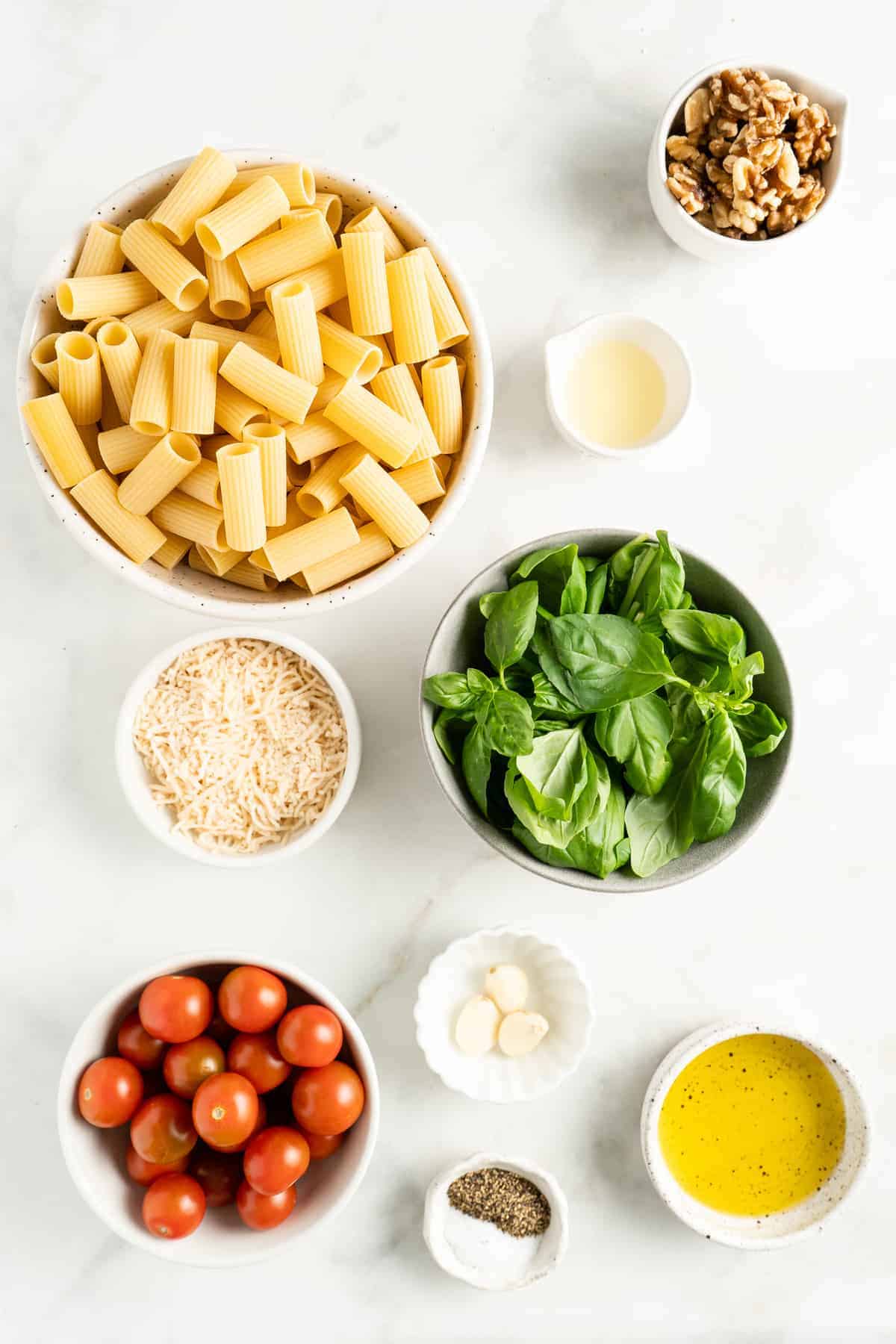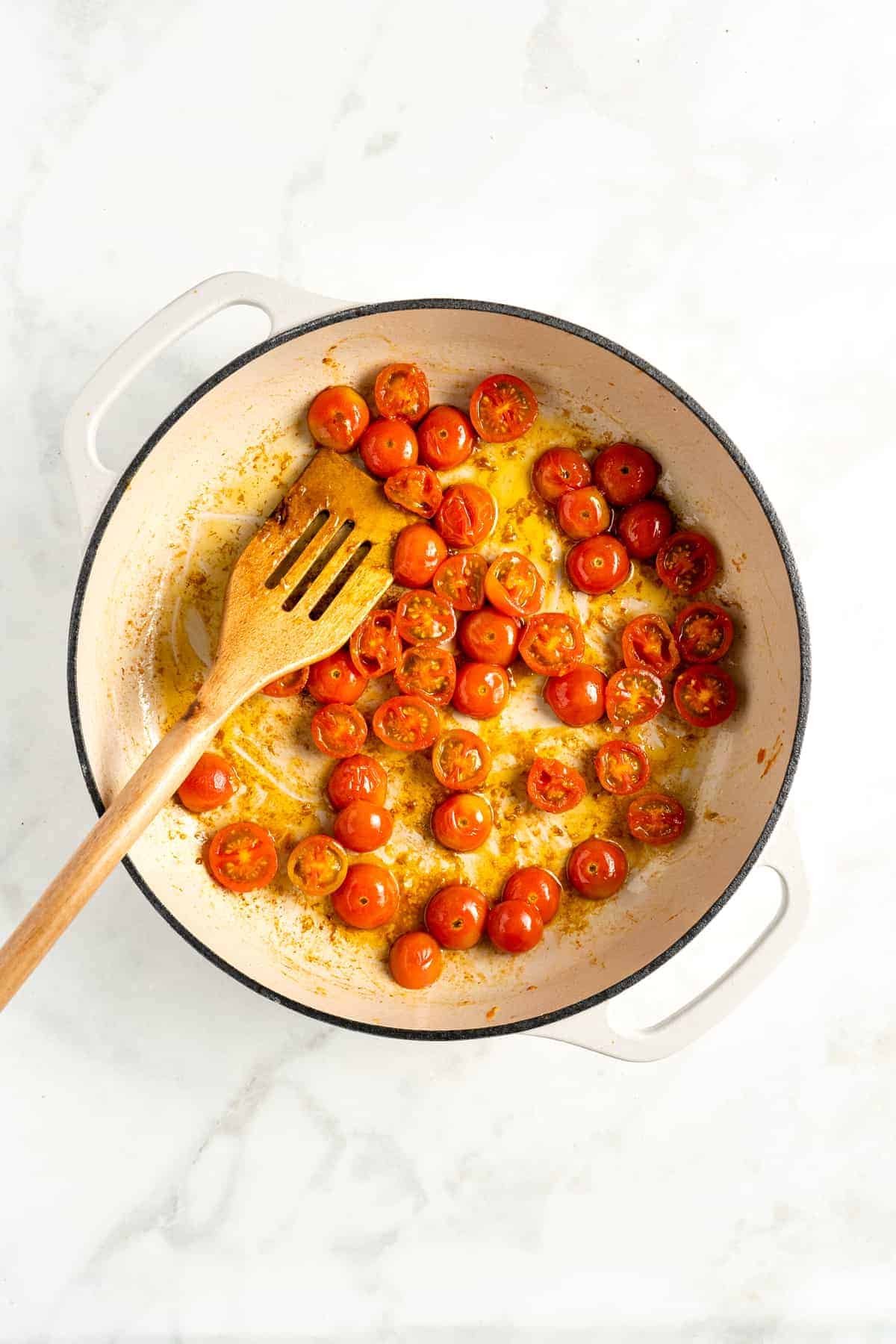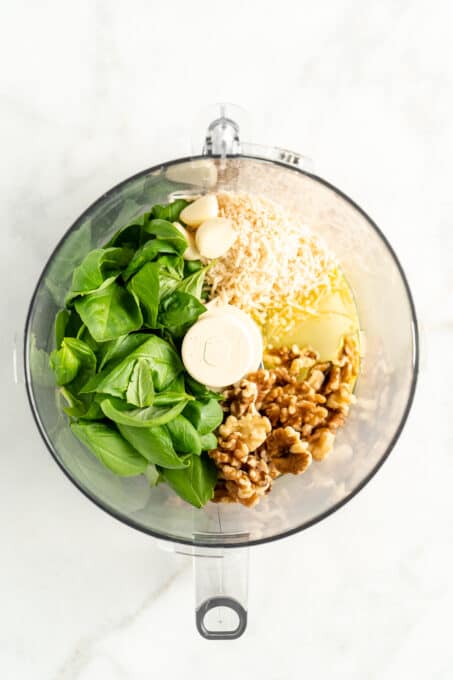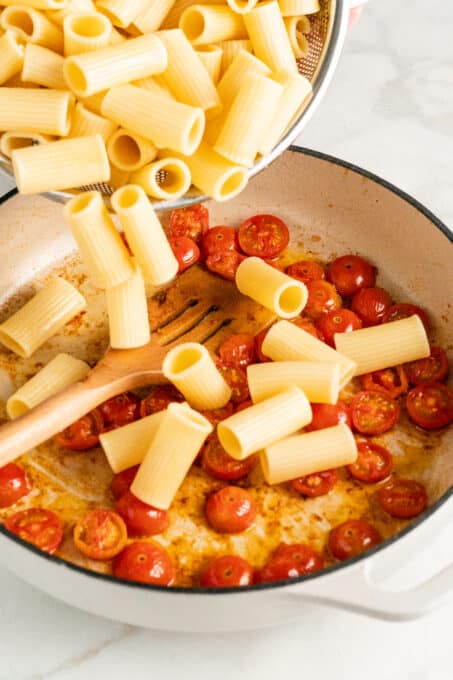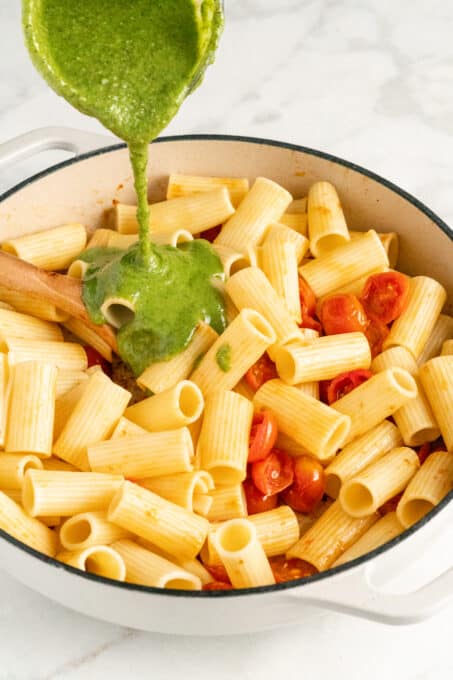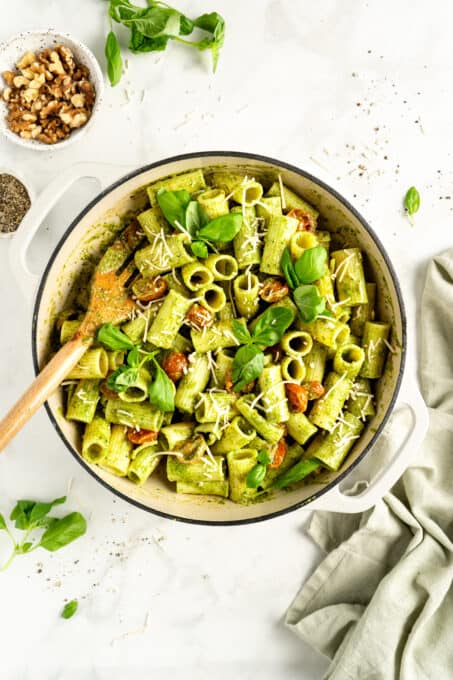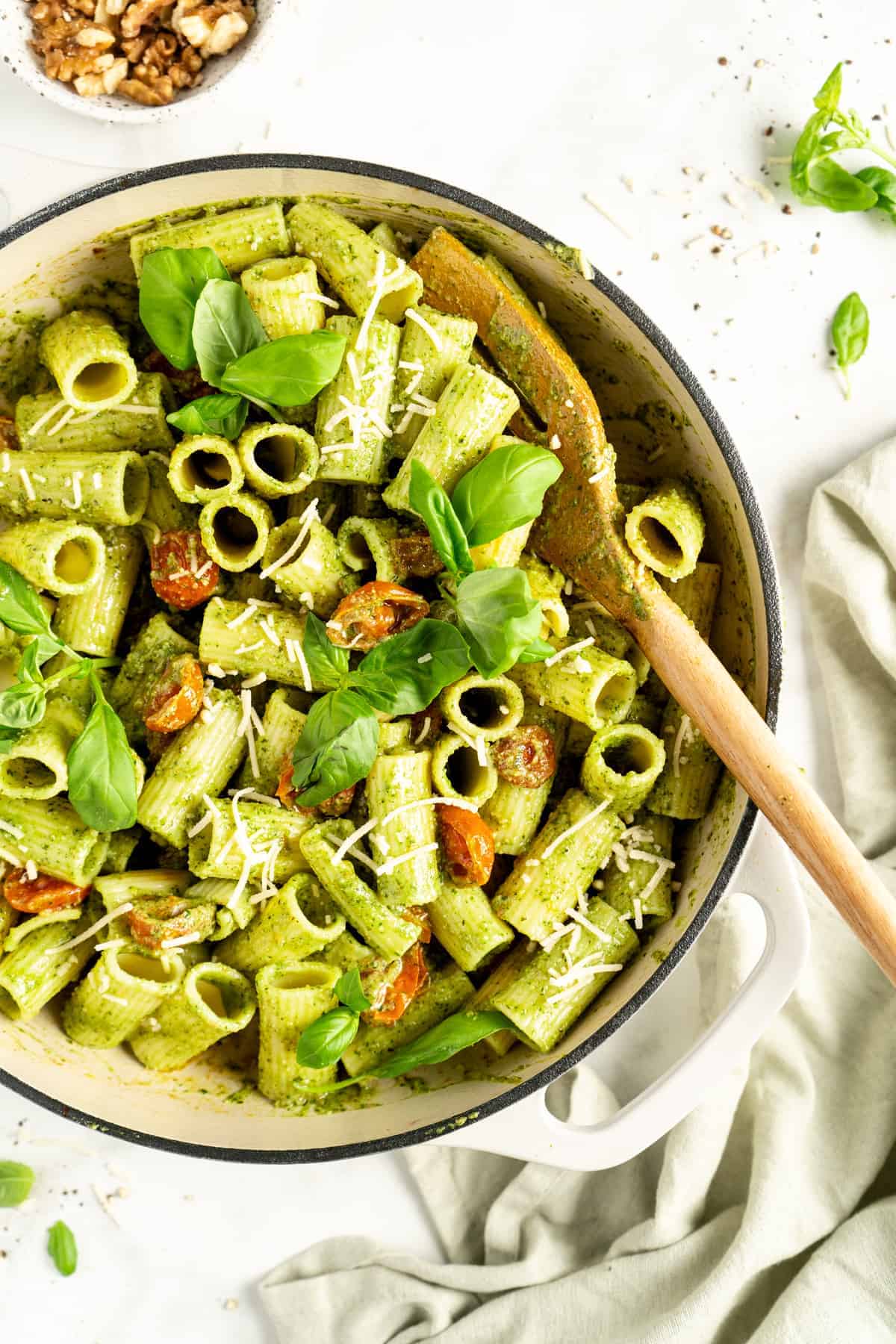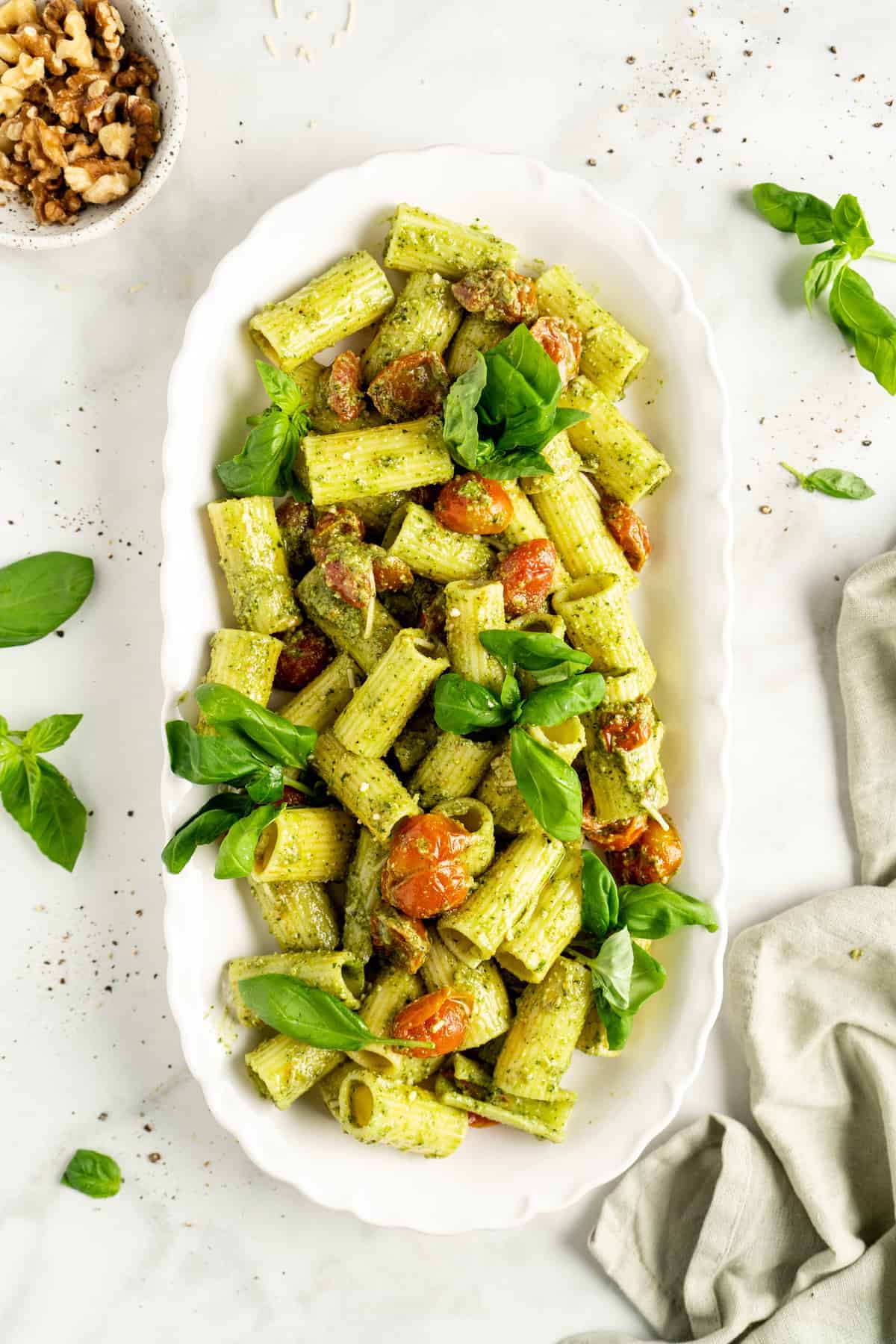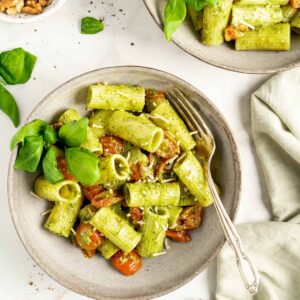I love exploring new flavors and ideas, but there’s something to be said for those classic, go-to recipes you return to again and again. Pesto pasta is definitely one of those dishes. It’s easy to make, perfect for customizing, and it’s always packed with flavor. Even though it takes minutes to whip up for a weeknight dinner, it somehow always makes me feel like I’m eating a meal from a fancy Italian restaurant. I’ve made many a pesto pasta before, and many different kinds of pestos. Below, I include a basil pesto recipe made with walnuts and vegan Parmesan, but if you want to switch things up, you can choose from parsley pesto, or kale pistachio pesto, a more classic basil pesto or a creamy cashew pea pesto for something different. If you’re pressed for time, you can also use a store-bought pesto or one from the farmer’s market, which is totally okay too. Food is supposed to work for you, not the other way around!
Notes on Ingredients
Please note that this is important information on the ingredients and instructions and the FULL recipe with amounts and details can be found DOWN BELOW (scroll to it) in the recipe card.
For the vegan basil pesto:
Basil – Buy fresh looking leaves without any dark spots or sliminess. Raw walnuts – If you like, you can toast them to bring out their flavor. Vegan parmesan cheese – Here’s how to make your own vegan parmesan. Garlic Lime juice – Swap with lemon for a more traditional pesto. Sea salt Olive oil Pepper
For the pasta and tomatoes:
Pasta – Use any variety you like, but fusilli, rigatoni, rotini, and cavatappi are all great for “gripping” the pesto. Pesto – you can use store-bought or my homemade recipe! Double check your store-bought pesto that it’s vegan; most contain parmesan cheese. Vegan heavy cream – for added creaminess! You can use store-bought or my homemade recipe! This is a new addition to this recipe so it isn’t in the ingredient photo above. Pasta water – You’ll have to remember to reserve it before you drain the pasta. (Anyone else always forget to do that?!) Coconut oil – Olive oil will work, too. Grape or cherry tomatoes – Feel free to swap this with your favorite seasonal veggies. Salt and pepper Vegan parmesan – For serving with your pasta.
How to Make Vegan Pesto Pasta
Here’s a step-by-step guide to making pesto pasta: Cook the pasta. Bring a pot of salted water to a boil and cook the pasta according to the package instructions. Cook the tomatoes. While you’re cooking the pasta, place a skillet over medium heat and melt the coconut oil. Add the tomatoes, and cook, stirring often, until they’re cooked down and burst, about 5 minutes. Make the pesto. Add all of the pesto ingredients into a food processor or high powered blender and process until the mixture reaches your desired consistency, scraping down sides if needed. You can store any excess in a jar, and use what you need for the dish. Finish the pasta. Drain the pasta, reserving some of the cooking water. Add the pasta to the skillet with the tomatoes, then add the pesto and stir to coat. If the pesto seems too thick, you can add some of the cooking liquid. Divide into bowls or plates and garnish with vegan Parmesan.
Tips for Success
This recipe is perfect for beginning cooks, but I have a few tips to help you along the way:
Don’t be afraid to add a lot of oil. One mistake a lot of people make with pesto is skimping on the oil. The result is a thick, paste-like mixture that doesn’t coat the pasta. For a smooth, creamy pesto, you have to be liberal with the oil! Customizing the texture. When processing the pesto, you can stop once all of the ingredients are finely chopped for a more rustic feel, or you can keep going until the ingredients are completely pureed. It’s up to you, but it’s good either way! About the nuts. I use walnuts, but cashews, pine nuts, and walnuts can all be used to make pesto, too. If you’re allergic to nuts, try using hemp seeds instead.
How to Store and Reheat Leftovers
If you have leftover pesto pasta, pop it in an airtight container and keep it in the refrigerator for up to 3 days. You can either reheat it in the microwave until it’s warmed through, or place it in a skillet and warm it over medium heat.
Can I Freeze Pesto?
Yes, you can freeze pesto—in fact, I recommend that you do! I love keeping a variety of pestos on hand in the freezer for quick weeknight dinners. For individual portions, freeze your pesto in an ice cube tray, then transfer the cubes to a freezer bag. To freeze a big batch, transfer the pesto to a freezer bag, press out the air, and freeze it flat in your freezer. When you’re ready to use it, you can either thaw the pesto in the refrigerator or place the freezer bag in a bowl of hot water until it thaws. Enjoy friends! If you make this vegan pesto pasta, please snap a photo and tag #jessicainthekitchen on Instagram! We’d also love it if you would leave a comment below, and give the recipe a rating! Thanks so much!

